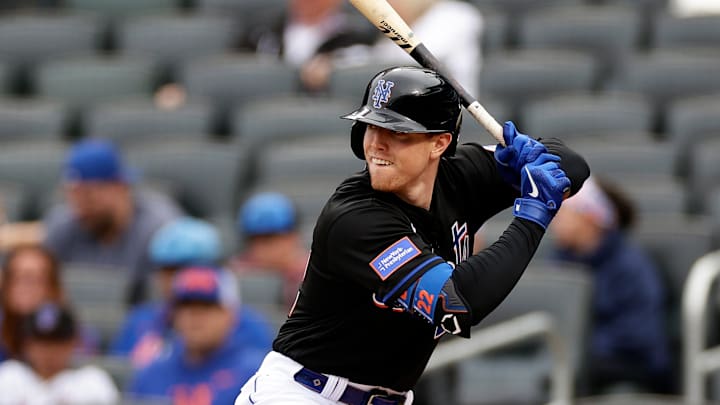There isn't a prospect playing elsewhere New York Mets fans will have an eye on more this year than Pete Crow-Armstrong. Since getting traded to the Chicago Cubs, the first round pick of the 2020 Mets has been on the rise. Now considered one of the best prospects in baseball, the 2024 season is the year when trading him away should sting the most.
Or will it?
That's the funny thing about prospects. We look at ones traded away longingly. The ones we do have, no matter how hyped they were not all that long ago, get overlooked. Brett Baty, who was drafted in the first round one year before Crow-Armstrong, is a guy many are quitting on while unjustifiably buying into PCA.
You can't fairly quit on Brett Baty while anointing Pete Crow-Armstrong a superstar in the making
We've been here before. Jarred Kelenic haunted Mets fans. So far, he hasn't exactly shown himself to be a superstar. He's now with the Atlanta Braves after an underwhelming tenure with the Seattle Mariners. Say what you will about the trade. It wasn’t a complete disaster and the Mariners seemed to reap very little reward in the end.
Baty and Crow-Armstrong are at different points of their career. Baty had nearly a full year in the majors to prove himself. He failed. Crow-Armstrong had much less time. He still went hitless. A 0 for 14 snap in 2023 began the career of a guy who will eventually get his first hit. Let’s just hope Pete Alonso isn’t there to toss the ball into the stands.
A much different player than Baty, Crow-Armstrong batted .283/.365/.511 in 500 Triple-A plate appearances last year. He hit 20 home runs and stole 37 bases. All at 21-years-old, the sky's the limit for him.
Meanwhile, Baty’s most comparable season came in 2022 when he last had a full year in the minors at 22-years-old. In 420 plate appearances at Double-A and Triple-A, he posted a .315/.410/.533 slash line with 19 home runs. Offensively, the two are similar at the plate with the big difference between PCA’s deadly speed.
A wider variety of tools is one thing that’ll have Mets fans craving Crow-Armstrong continuously. Baty, on the other hand, with only a wooden stick to get excited about, has less room to dazzle. If he’s not hitting, he’s not playing. Crow-Armstrong, on the other hand, can always end up as a fourth outfielder somewhere in a worst-case scenario.
The tendency to quit on a young player after one bad year isn’t a fair part of being a fan. Justified as it is because there are no written rules of fandom, one cannot give Baty a thumb down while reasonably etching out a Hall of Fame plaque for Crow-Armstrong.
The truth is no one can ever tell how a player will do once they get to the highest level. Both players are clearly minor league graduates. The difference right now is one has had the time to struggle in the majors. The other will get his opportunity to sink or swim sooner than later. Will Cubs fans throw him a life raft if it gets ugly?
